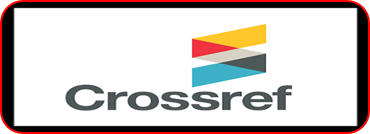FEN BİLGİSİ ÖĞRETMEN ADAYLARININ HÜCRE KONUSUNDAKİ KAVRAMSAL BİLGİ DÜZEYLERİNİN ÇİZİMLER YOLUYLA BELİRLENMESİ
Abstract
The
cell, as the amazing unit of life, is the smallest structure of living which
acts as a thing alone and can carry out all the vital functions of life. The
technological developments and multidisciplinary studies provide new
opportunities to understand the structure of cell continually. According to
these studies, the target is to determine the knowledge levels of high
education students on the basic part of cell and organelles as part of their
drawings. The students are asked to draw
an animal cell and to state the names of the organelles with the basic
parts of cell. In this respect, it has been studied on their conceptual
knowledge levels upon cell. This study has focused on totally 286 students of
9th, 10th, 11th and 12th classes on three different high educations in Kars,
city centre , in 2014-15 Education Year.
Although
the students are asked to draw an animal cell and to show the parts, they have
drawn chloroplast and cell wall which are not in animal cells and are the parts
of plant cell. This manner demonstrates that the high education students have
less misconception on subjects of animal and plant cells. As a result of
surveys, in all of 9th, 10th, 11th classes, it is obvious that they have stated
the core as the basic part of cell; yet, in the 12th classes, the students have
stated the mitochondria as a cell organelle in their drawings. The cell nucleus
is the most stated cell structure respectively %82, %76,6 and %86,3 in 11th
classes; mitochondria is the most stated one in 12th classes at the rate
of % 96,7 in the drawings of the
students. The cell nucleus as basic structure of cell, cytoplasm and cell
membrane; mitochondria as cell organelles, ribosome, golgi apparatus, tonoplast,
endoplasmic reticulum,lysosome and centrosome have been the parts of animal
cell the students in the study all carry out in their drawings. This matter
also indicates that they clearly have learned these structures and organelles
as syllabus in science and technology lesson of high students as well as in
biology lesson of high education students as they repeat. Of all these
organelles, especially golgi apparatus and lysosome have been increased at the
rate of %46,2 and %40 compared to previous year, they have become the best
known organelles. While the nucleolus has not been stated by the students of
9th class, RNA, chromosome, chromatin fibre and pore have been only stated by
the students of 12th class as cellular structures.
References
- Atasoy, B. (2004). Fen Öğrenimi ve Öğretimi (2. Baskı). Ankara: Asil Yayınevi.
- Aydın, F. (2011). İlköğretim 6, 7 ve 8. Sınıf Öğrencilerinin Teknolojiye Yönelik Düşüncelerinin Çizimle Belirlenmesi. 2nd International Conference on New Trends in Education and Their Implications 27-29 April, 2011 Antalya-Turkey.
- Çelikler, D. ve Kara, F. (2012). İlköğretim Fen Bilgisi Öğretmen Adaylarının Periyodik Çizelge Konusundaki Bilgilerinin Çizim Yoluyla Saptanması. Eğitim ve Öğretim Araştırmaları Dergisi, 1(3), 70-76.
- Çelikler, D. ve Topal, N. (2011). İlköğretim Fen Bilgisi Öğretmen Adaylarının Karbondioksit ve Su Döngüsü Konusundaki Bilgilerinin Çizim ile Saptanması. Journal of Educational and Instructional Studies in the World. 1(1), 7-79.
- Çetin, G. ve Çalışkan, M. (2014). Robert Hook’un Gördüğü Hücreler. Eğitim ve Öğretim Araştırmaları Dergisi. 3 (4), 256-263.
- Geçkil, H., Özmen, M. ve Yeşilada, Ö. (2011). Moleküler Hücre Biyolojisi (Altıncı Baskıdan Çeviri). Palme Yayınevi.
- Güneş, T. (2010). Genel Biyoloji. Anı Yayıncılık. Genişletilmiş 2. Baskı. Ankara.
- Kara, İ., Erduran Avcı, D. ve Çekbaş, Y. (2009). Fen Bilgisi Öğretmen Adaylarının Işık Kavramı İle İlgili Bilgi Düzeylerinin Araştırılması. Mehmet Akif Ersoy Üniversitesi Eğitim Fakültesi Dergisi, 8(16), 46-47.
- Karol, S., Ayvalı, C. ve Suludere, Z. (1995). Hücre Biyolojsi. Gözde Repro Ofset, Üçüncü Baskı. Ankara.
- Kete, R., Horasan, Y. ve Namdar, . (2012). Investigatiin of the Conceptual Understanding Difficulties in 19th Grade Biology Books about Cell Unit. Elementary Education Online, 11(1), 95-106.
- MEB Komisyon (2013). Ortaöğretim Biyoloji 9. Sınıf. Ankara: Milli Eğitim Bakanlığı Yayınları.
- Patrick, G. P. ve Tunnicliffe, S.D. (2010). Science Teacher’ Drawings of What is Inside the Human Body. Journal of Biological Education. 44(2), 80-87.
- Pollock, D. (2005). The Remarkable Cell. The Kats News, Kansas association of Teacher of Science, A State Chapter of the National Science Teachers Association, 37(2), 1-28.
- Saygın, Ö., Atılboz, N. G. ve Salman, S (2006). Yapılandırmacı Öğretim Yaklaşımının Biyoloji Dersi Konularını Öğrenme Başarısı Üzerine Etkisi: Canlılığın Temel Birimi-Hücre. Gazi Üniversitesi, Gazi Eğitim Fakültesi Dergisi, 26 (1), 51-64.
- Şahin, F. (2002). Kavram Haritalarının Değerlendirme Aracı Olarak Kullanılması İle İlgili Bir Araştırma. Pamukkale Üniversitesi Eğitim Fakültesi Dergisi, 11 (1), 17-32.
- Şahin, F. ve Oktay, A. (1996). İlkokullarda Hücre Solunumu ile İlgili Kavramsal Değişim. M. Ü. Atatürk Eğitim Fakültesi Eğitim Bilimleri Dergisi, 8, 227-236.
- Tekşen, F. (2006). Tıbbi Biyoloji ve Genetik Ders Kitabı (2. Baskı). Ankara Üniversitesi Sağlık Eğitim Fakültesi Yayınları No:4, Ankara.
- Topsakal, U. U. ve Oversby, J. (2012). Turkish Student Teachers’ Ideas About Diagrams of a Flower and a Plant Cell. Journal of Biological Education, 46(2), 81-92.
- Uşak, M. (2009). Preservice Science and Technology Teachers’ Pedagogical Content Knowledge on Cell Topics. Educational Sciences: Theory and Practice, 9 (4) 2033-2046.
- White, R.T. & Gunstone, R. F. (1992). Probing Understanding. London: The Falmer Press.
- Yörek, N. (2007). Öğrenci Çizimleri Yoluyla 9. ve 11. Sınıf Öğrencilerinin Hücre Konusundaki Kavramsal Anlama Düzeylerinin Belirlenmesi. Dokuz Eylül Üniversitesi Buca Eğitim Fakültesi Dergisi, 22, 107-114.
Abstract
References
- Atasoy, B. (2004). Fen Öğrenimi ve Öğretimi (2. Baskı). Ankara: Asil Yayınevi.
- Aydın, F. (2011). İlköğretim 6, 7 ve 8. Sınıf Öğrencilerinin Teknolojiye Yönelik Düşüncelerinin Çizimle Belirlenmesi. 2nd International Conference on New Trends in Education and Their Implications 27-29 April, 2011 Antalya-Turkey.
- Çelikler, D. ve Kara, F. (2012). İlköğretim Fen Bilgisi Öğretmen Adaylarının Periyodik Çizelge Konusundaki Bilgilerinin Çizim Yoluyla Saptanması. Eğitim ve Öğretim Araştırmaları Dergisi, 1(3), 70-76.
- Çelikler, D. ve Topal, N. (2011). İlköğretim Fen Bilgisi Öğretmen Adaylarının Karbondioksit ve Su Döngüsü Konusundaki Bilgilerinin Çizim ile Saptanması. Journal of Educational and Instructional Studies in the World. 1(1), 7-79.
- Çetin, G. ve Çalışkan, M. (2014). Robert Hook’un Gördüğü Hücreler. Eğitim ve Öğretim Araştırmaları Dergisi. 3 (4), 256-263.
- Geçkil, H., Özmen, M. ve Yeşilada, Ö. (2011). Moleküler Hücre Biyolojisi (Altıncı Baskıdan Çeviri). Palme Yayınevi.
- Güneş, T. (2010). Genel Biyoloji. Anı Yayıncılık. Genişletilmiş 2. Baskı. Ankara.
- Kara, İ., Erduran Avcı, D. ve Çekbaş, Y. (2009). Fen Bilgisi Öğretmen Adaylarının Işık Kavramı İle İlgili Bilgi Düzeylerinin Araştırılması. Mehmet Akif Ersoy Üniversitesi Eğitim Fakültesi Dergisi, 8(16), 46-47.
- Karol, S., Ayvalı, C. ve Suludere, Z. (1995). Hücre Biyolojsi. Gözde Repro Ofset, Üçüncü Baskı. Ankara.
- Kete, R., Horasan, Y. ve Namdar, . (2012). Investigatiin of the Conceptual Understanding Difficulties in 19th Grade Biology Books about Cell Unit. Elementary Education Online, 11(1), 95-106.
- MEB Komisyon (2013). Ortaöğretim Biyoloji 9. Sınıf. Ankara: Milli Eğitim Bakanlığı Yayınları.
- Patrick, G. P. ve Tunnicliffe, S.D. (2010). Science Teacher’ Drawings of What is Inside the Human Body. Journal of Biological Education. 44(2), 80-87.
- Pollock, D. (2005). The Remarkable Cell. The Kats News, Kansas association of Teacher of Science, A State Chapter of the National Science Teachers Association, 37(2), 1-28.
- Saygın, Ö., Atılboz, N. G. ve Salman, S (2006). Yapılandırmacı Öğretim Yaklaşımının Biyoloji Dersi Konularını Öğrenme Başarısı Üzerine Etkisi: Canlılığın Temel Birimi-Hücre. Gazi Üniversitesi, Gazi Eğitim Fakültesi Dergisi, 26 (1), 51-64.
- Şahin, F. (2002). Kavram Haritalarının Değerlendirme Aracı Olarak Kullanılması İle İlgili Bir Araştırma. Pamukkale Üniversitesi Eğitim Fakültesi Dergisi, 11 (1), 17-32.
- Şahin, F. ve Oktay, A. (1996). İlkokullarda Hücre Solunumu ile İlgili Kavramsal Değişim. M. Ü. Atatürk Eğitim Fakültesi Eğitim Bilimleri Dergisi, 8, 227-236.
- Tekşen, F. (2006). Tıbbi Biyoloji ve Genetik Ders Kitabı (2. Baskı). Ankara Üniversitesi Sağlık Eğitim Fakültesi Yayınları No:4, Ankara.
- Topsakal, U. U. ve Oversby, J. (2012). Turkish Student Teachers’ Ideas About Diagrams of a Flower and a Plant Cell. Journal of Biological Education, 46(2), 81-92.
- Uşak, M. (2009). Preservice Science and Technology Teachers’ Pedagogical Content Knowledge on Cell Topics. Educational Sciences: Theory and Practice, 9 (4) 2033-2046.
- White, R.T. & Gunstone, R. F. (1992). Probing Understanding. London: The Falmer Press.
- Yörek, N. (2007). Öğrenci Çizimleri Yoluyla 9. ve 11. Sınıf Öğrencilerinin Hücre Konusundaki Kavramsal Anlama Düzeylerinin Belirlenmesi. Dokuz Eylül Üniversitesi Buca Eğitim Fakültesi Dergisi, 22, 107-114.
Details
| Journal Section | Articles |
|---|---|
| Authors | |
| Publication Date | December 31, 2015 |
| Submission Date | March 18, 2015 |
| Acceptance Date | July 23, 2015 |
| Published in Issue | Year 2015 Volume: 2 Issue: 1 |







